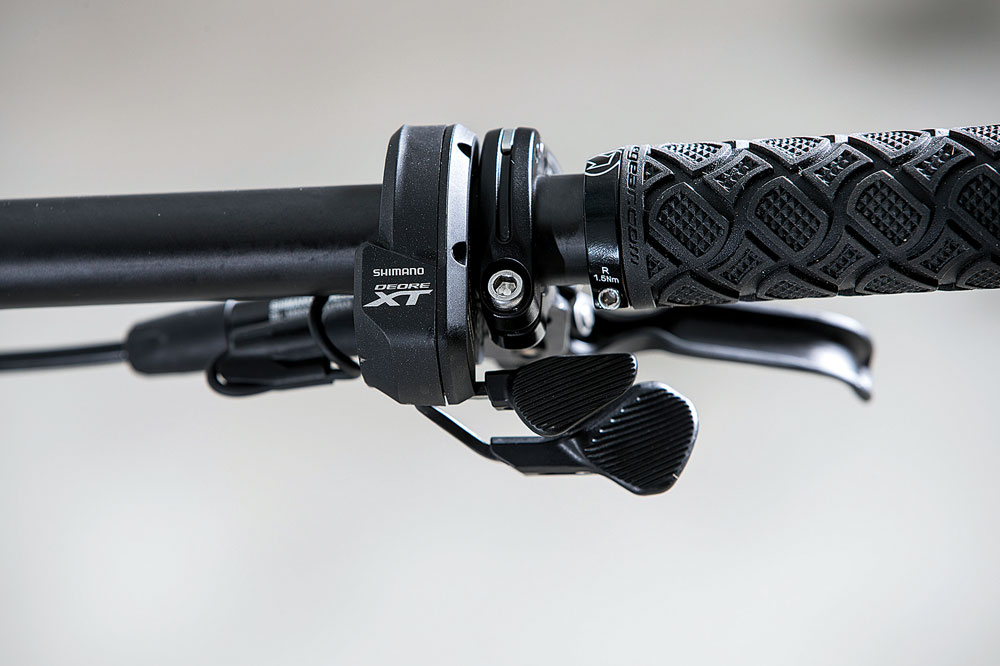Should you go electric?
With a £1k price tag, Shimano XT Di2 is not exactly cheap but it’s not astronomically more than other high end drivetrains. Here are the pros and cons of switching to Shimano’s second tier electronic system.
1. More affordable than XTR

New Shimano XT Di2 shares plenty of parts with the current XTR Di2 group — the battery, charger, E-tube SD50 electric cables, handlebar display and junction box (which joins everything together).
The price difference, therefore, can only be down to a couple of components. Those are the front mech (£199.99), rear mech (£289.99) and shifter (£99.99) giving a grand saving of £260.
If you want to run a single-ring electric XT drivetrain, the bottom line is around £950 (plus three SD50 cables at £20 each).
2. Bigger gear range

The XT cassette is available in an additional 11-42t option to go alongside the standard 11-40t.
This gives you a gear range of 382 per cent, which is obviously not up there with the 500 per cent range of SRAM’s new 12-speed Eagle drivetrain, or even SRAM’s current 11-speed drivetrain, but if you tailor the chainring size correctly you can get a pretty workable spread of gears.
The only glitch is the lack of ring sizes, as Shimano is only offering 30, 32 and 34t rings for the XT groupset.
3. XTR-level shifting

XT components may not have the fancy finish of XTR, but you won’t notice any difference in shifting performance. Even under load and covered in mud, XT Di2 changes gear with predictable regularity.
Shifter ergonomics are also identical and the Firebolt paddles have all the same adjustment features for modifying the set-up and positioning. The XT rear derailleur is a Shadow Plus design with the clutch mechanism and is also direct mount compatible
4. Easier set-up

Like XTR, Shimano XT Di2 is fully programmable, allowing you to modify the speed of the shifts and change the function of the individual Firebolt shift levers.
Shimano has added Bluetooth connectivity with the introduction of XT Di2, so you don’t have to connect to a laptop to tweak the settings.
Using the new smartphone app, you can actually configure XT Di2 on the trailside. The built-in D-Fly Data Management system also lets you see battery and gear information on a compatible third-party device, such as a GPS.
And reasons not to…
The missed opportunities:
Shimano XTR Di2 performed excellently and reliably, but for XT Shimano could have tweaked some of the hardware, specifically the junction box, to better integrate with the frame tubes.
The E-tube SD50 electric cables could also be a little more robust, especially where they’re exposed around the rear derailleur and bottom bracket area.
A secondary mounting option for the display would also be a good idea because, when running a short stem, you can easily knock it with your knee.
Shimano hasn’t gone far enough with the electronics either — how about a security feature, so you can shut down/lock the drivetrain when transporting or storing your bike? Or maybe a proximity alarm or some form of tracking device if the bike is stolen?




